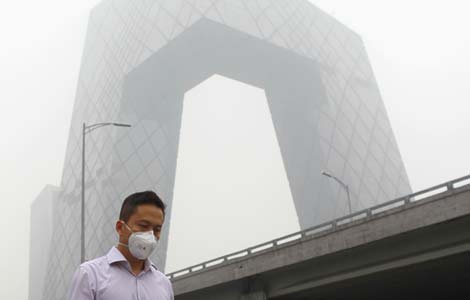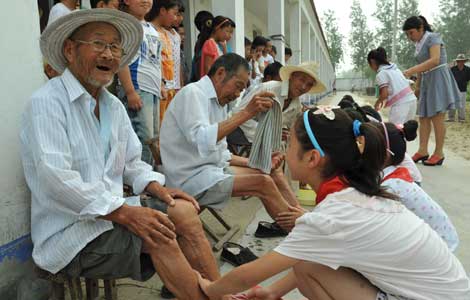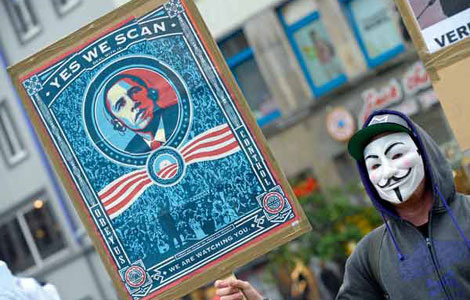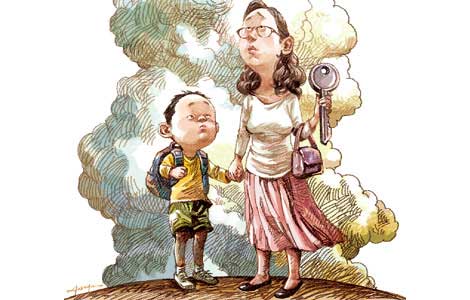Study: Gentrification threatens NY's Chinatown
Updated: 2013-07-02 11:31
By Caroline Berg in New York (China Daily)
|
||||||||
Gentrification is threatening the livelihood of immigrants who live in New York's Chinatown, according to a preview of a land-use study that also looked at the Chinatowns and surrounding immigrant areas of Boston, Philadelphia and New York.
The Asian American Legal Defense and Education Fund (AALDEF) spent a year in collaboration with community partners, academic institutions and hundreds of volunteers to record lot by lot in each block the existing land uses in the Chinatowns of the three East Coast cities. The study also used detailed analyses of 2010 Census data to show the transformation of those Chinese neighborhoods over the past three decades.
The New York-based fund recently released the preview that focuses on New York's Chinatown and will publish its full report later this month.
"Chinatown has been a place where families have lived together for generations, and now it's becoming more and more inhabited by young professionals and students," said Bethany Li, staff attorney at the fund. "This shift from family to non-family households is a significant indicator of gentrification."
Census data show the Asian population of New York's Chinatown has remained stable at about 42 percent of the entire racial makeup since 1990, and the white population has increased to the current 23,314 from 22,229 in 1990, according to the fund.
The increase in the white population is seen as another gentrification indicator because white households in New York's Chinatown have generally been more affluent than other racial groups, the fund said in its preview.
"I think we forget sometimes how much these people rely on the types of networks and resources that are built up in places like Chinatown where all the services they rely on are all in one place," said Li. "Establishing such ethnic enclaves sounds like an easy thing to replicate, but I don't think the importance of preserving these communities can be overstated."
Li said one thing the New York City government should do is focus on how to regulate rent to maintain affordable housing in Chinatown.
Despite how the median monthly rent between 1990 and 2006-2010 remained lower in Chinatown than in New York overall - $351 versus $448 in 1990 and $851 versus $1,022 in 2006-10 - the rate in Chinatown rose from 78 percent to 83 percent of the city's median rent, according to the fund.
Li said increasingly more rent-stabilized, rent-controlled residents in Chinatown are being pushed out in favor of young professionals who unknowingly pay more in rent than is necessary.
"These young residents spend maybe a year or two in the apartment, and they don't end up engaging in the same fights for repairs and making sure that the landlord is following rent regulation rules," Li said.
Without the activism and efforts of groups such as the Chinese Progressive Association in Boston, Chinese Staff and Workers' Association in New York, and Asian Americans United in Philadelphia, these Chinatowns would likely contain even more high-end and institutional expansion, according to the preview.
In November 2008, the New York City Council unanimously approved New York's third-largest rezoning plan since 1961 despite protests by Chinatown and Lower East Side residents and workers, who feared the plan would accelerate luxury development.
"During the 2008 rezoning, the everyday person didn't know as much about what land use and zoning meant to the community," Li said. "I think more and more people are now more active and aware of these issues and more vigilant in going forward."
Around September 2011, the City Council also unanimously approved a new Business Improvement District (BID), a public-private entity covering a significant portion of Chinatown with the alleged goal of cleaning its streets.
In response, small business and property owners filed an unprecedented number of objections, concerned that BID fees assessed on each property would result in higher commercial rents and increase displacement and vacancies of commercial properties.
"I think gentrification is a hard thing to fight," Li said. "We hope that this type of data will properly arm [local] organizations with what they need to make their policies and other arguments for why Chinatown needs to continue to be geared towards small businesses and local residence workers."
Of New York Chinatown's 2,274 ground-floor businesses or institutions, 94 percent are small businesses geared toward residents' everyday use and purchase of affordable goods and services, whereas 4 percent are national chains and 1 percent are local chains, according to the preview.
"People often point to Washington's Chinatown as one of the worst case scenarios where what they talk about is ensuring places like Starbucks and Hooters have Chinese characters in order to make it Chinatown," Li said. "Whereas here we have communities where people do actually live and work and rely on them."
carolineberg@chinadailyusa.com
(China Daily USA 07/02/2013 page2)

 Egypt army gives Mursi 48 hours to share power
Egypt army gives Mursi 48 hours to share power
 No quick end in sight for Beijing smog
No quick end in sight for Beijing smog
 New filial law sparks debate
New filial law sparks debate
 Bakelants claims Tour de France second stage
Bakelants claims Tour de France second stage
 2013 BET Awards in Los Angeles
2013 BET Awards in Los Angeles
 Gay pride parade around the world
Gay pride parade around the world
 Four dead in Egypt clashes, scores wounded
Four dead in Egypt clashes, scores wounded
 New NSA spying allegations rile European allies
New NSA spying allegations rile European allies
Most Viewed
Editor's Picks

|

|

|

|

|

|
Today's Top News
19 firefighters killed in Arizona fire
Book reveals islands' true history
Tokyo warned not to resort to 'empty talk'
Snowden applies for Russian asylum
No quick end in sight for Beijing smog
New home prices defy curbs
Mandela 'still critical but stable'
Shanghai to open first Sino-foreign high school
US Weekly

|

|






